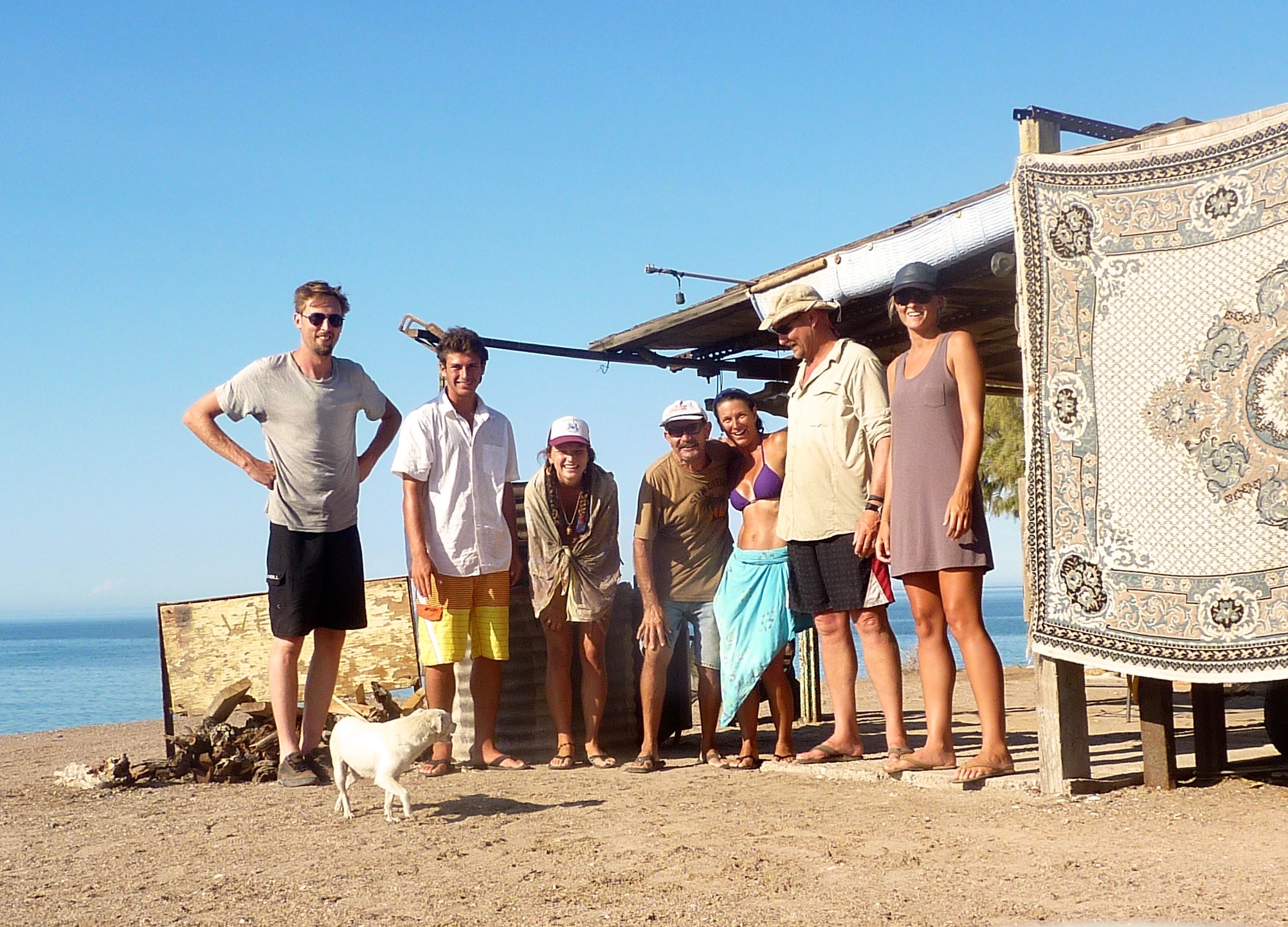Guest blog by Bri Bruce, "The Devil's Road" Associate Producer
There is an acute and undeniable buzz in me--a palpable, electric thrumming. I'm keeping pace of it, all too aware of the nerves, an excitement I feel coursing through me right down to the tips of my fingers. And I know why.
Though it's only been several years, I nearly felt my heart skip a beat at my first glimpse of the Sea of Cortez after some time. It's like seeing an old friend. This body of water is the definition of blue. Azure, cobalt, sapphire, cyan. Navy, midnight, indigo. In the cut out of the airplane window, this blue and all of its shades fills every space, halved by the plane's slice of wing. Slivers of peninsula in the distance are flanked by wisps and crescents of sandy beaches. Gusts of wind dimple the water's surface, making it look as though it is shimmering. This is the blue that one dreams about long after leaving; the blue becomes part of you.
This came to mind earlier, seated outside Gate 55 for Virgin America flight 751. I was consumed by visions of that gulf blue. In contrast, I am also reminded of the browns and tans and rusts of Baja's desert terrain. Memories become only a kaleidoscope of colors, each belonging to a part of this wild and desolate corner of the world: dusty green of cordon; impossible orange of the tulip tree; vermillion on the wings of fly catchers and cardinals; blue-black of night sky. When I think of Baja, it is in a canvas of colors and in a symphony of movement and sounds--even that of silence.
The plane dipped, and swung south over the cape. Slowly, cactus took shape, scattered as far as the base of the mountains to the north, and sectioned by straight lines of dusty roads. Before I knew it, the runway seemed to roll out beneath us, announcing our arrival. After bouncing briefly along the pavement, we came to a halt beside the terminal.
When I stepped through the wall of heat pressing itself against the door of the airplane, immediately, as if by impulse or reflex, the word "home" came to me. Though I only stood on the tarmac of the San Jose del Cabo airport waiting for a bus beside all of the other luggage-laden passengers, I was distracted completely by thoughts of Baja--the Baja I have come to know.
For parts of my soul, this place is home. I'll never forget the desert's impossible silence, the drone of pangas in the shallow waters at dawn, machine-like clicking of cicadas at midday. As much the salt water of the gulf courses in my veins, I dream in the colors of the tala vera that adorn the entryways of tiendas and beachfront motels. On certain mornings, thousands of miles away from here, I'll notice the ocean at first light resembles the glassiness of the Sea of Cortez on a warm and windless morning. This is a Baja morning, I'll say.
Yet, equally memory fails me, never serving again as it once did, reminded of change. With each visit, there is a vast, ever-shifting view to adjust for. I hold more fondly my oldest memories. The way things used to be. Change here is a recurring theme. Though some may call it progress or industry, it saddens me to see the quickly disappearing character and last vestiges of all that colorfully defines the Baja I've come to know intimately over my lifetime. Memories become a point of reference. The way things used to be.
Never before have I been so self-aware. I believe recent politics have lent a sharper edge to our presence here. We are Americans, gringos. Gueros. There has never been any denying our outsided-ness. Self-aware and self-conscious, I am guilty by association regardless. We often mock ourselves. Which of these are not like the others. Though we try, we are incapable of assimilating completely. We know this.
But our respect and passion for the culture and the people and the places here keep us returning. And at this, I smiled at the bus driver who offered to load my bag into the bus, told him muchas gracias, and took a seat by the window.



